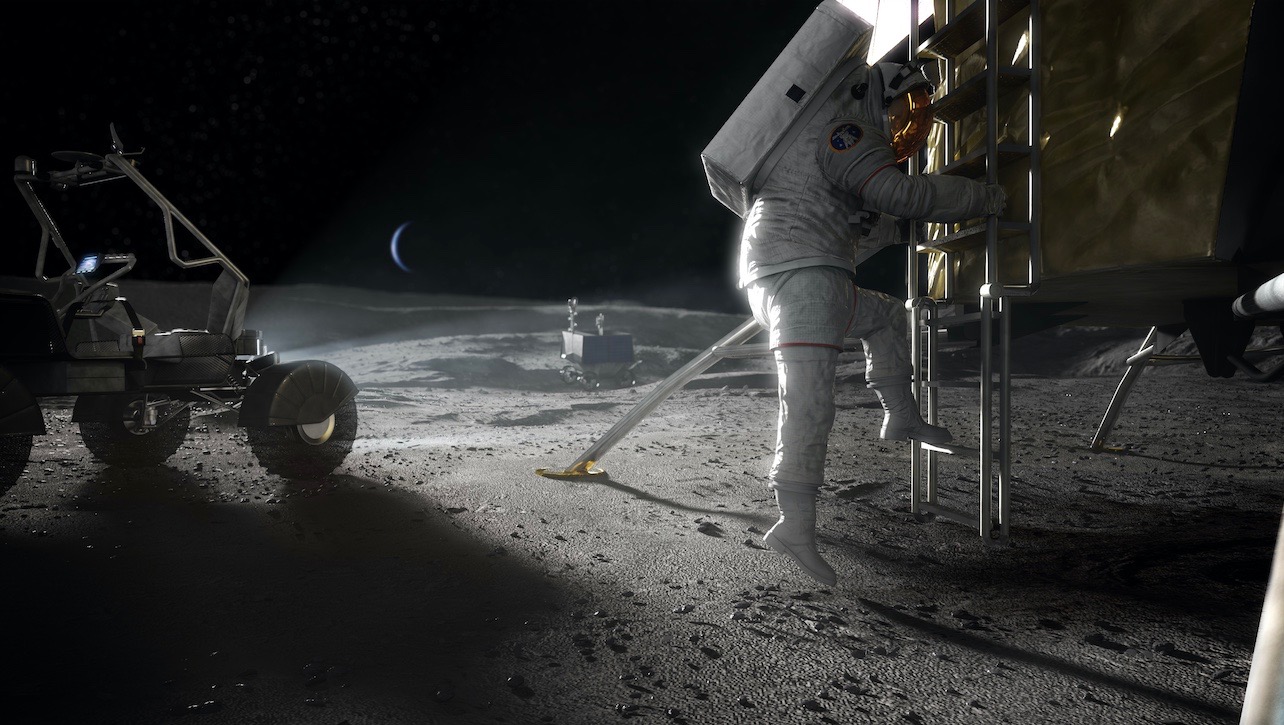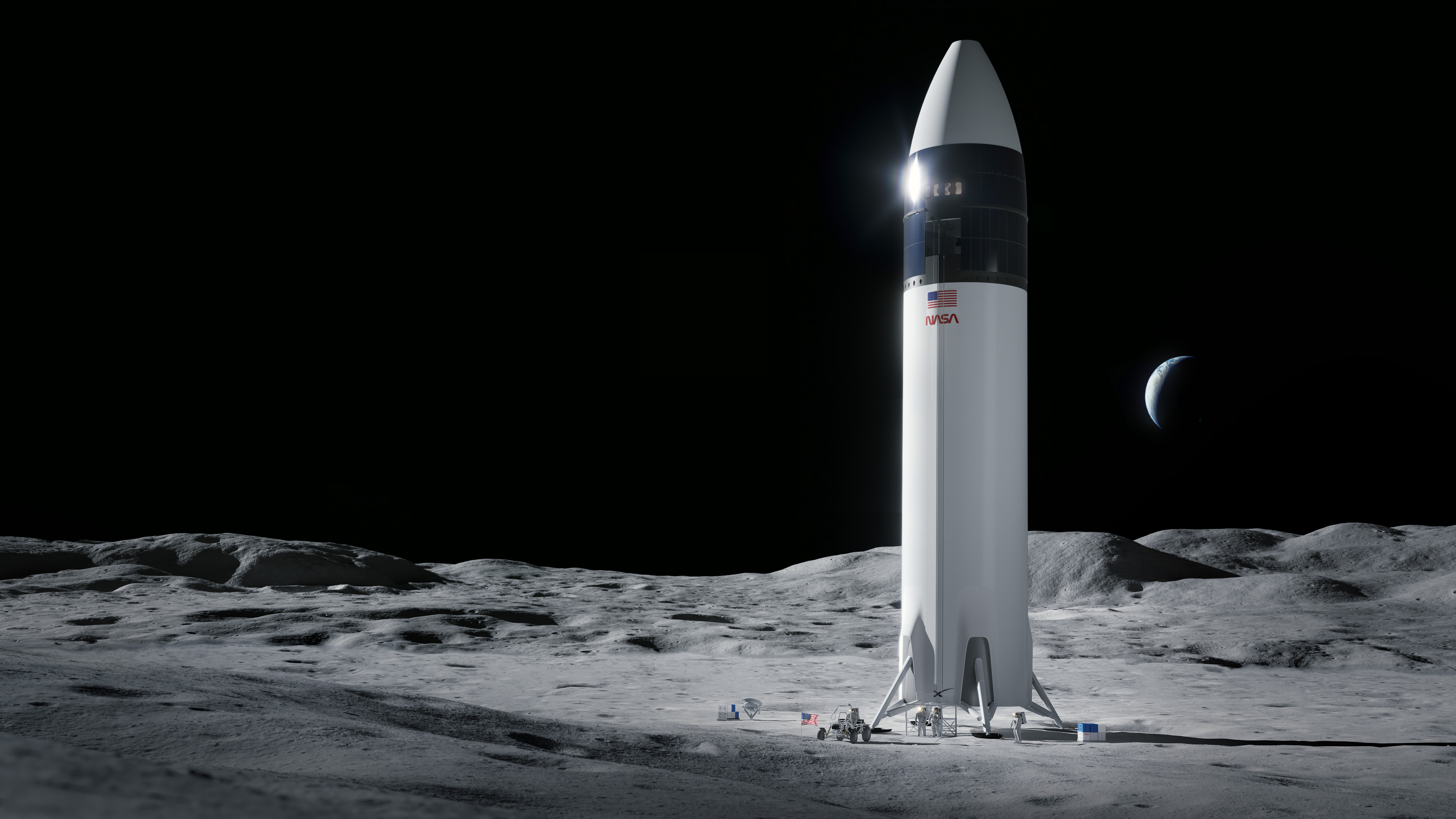NASA's Artemis astronauts won't land on the moon by 2024 deadline
The agency is now aiming for no earlier than 2025 to land the next astronauts on the moon, NASA's chief said.
NASA has let go of its goal to return humans to the moon's surface by 2024.
"2024 was not a goal that was really technically feasible," NASA Administrator Bill Nelson said during a news conference today (Nov. 9). "We are [now] estimating no earlier than 2025."
In a timeline set by the Trump administration, NASA has been working toward landing humans on the moon by 2024 as part of its Artemis program. That already aggressive target was recently made more challenging, as the agency experienced delays caused by the coronavirus pandemic and a lawsuit filed by Blue Origin, which paused development on the landing system to be used for the initial crewed touchdown. Now, Nelson has formally announced that the agency has a new lunar timeline.
Related: How NASA's Artemis moon landing with astronauts works
2024 is not going to happen
NASA's moonshot goal with Artemis is to return humans to the moon and create a sustained human presence on and around the lunar surface that will start with landing the first woman and the first person of color on the moon this decade. Until now, the agency has stuck to the Trump administration's ambitious deadline of 2024 for Artemis' first crewed landing.
Today the agency has officially changed this lunar landing deadline to "no earlier than 2025," Nelson said. This change is due, in part, to technical challenges and delays caused by the ongoing COVID-19 pandemic and a lawsuit from Blue Origin.
"The Trump administration target of [a] 2024 human landing was not grounded in technical feasibility," Nelson said."
Breaking space news, the latest updates on rocket launches, skywatching events and more!
In April, NASA awarded the Human Landing System (HLS) contract to build the agency's new moon lander to SpaceX. A contender for the contract, Blue Origin lodged official objections, published an open letter and ultimately filed a federal lawsuit against NASA in response. While the petitions were denied, the federal lawsuit halted all collaborative work on the moon lander until, on Nov. 4, it was announced that Blue Origin had lost.
Now that the lawsuit is closed, Nelson said, NASA can finally work with SpaceX on its moon lander — a critically important piece of equipment, as it will carry astronauts to and from the lunar surface.
"I spoke last Friday with Gwynne Shotwell, the CEO of SpaceX, which is the first contact we've been able to have about the HLS program" since this lawsuit, Nelson said.
"We both underscored the importance of returning to the moon as quickly and safely as possible, and the decision by the court on Friday means progress for the Artemis program," he added. "But our teams still need more time to work through the specifics before we can give a look at the readiness timeframe."
Nelson did share a few timeline goals for major milestones, however.
A change of plans and finances
In the briefing today, Nelson said that NASA aims to launch Artemis 1, the program's first test flight that will launch its Orion spacecraft aboard the Space Launch System (SLS) rocket on an uncrewed mission around the moon, in February 2022, the same target that had recently been given. But Artemis 2, a test flight that will send astronauts aboard Orion around the moon and back, will launch around May 2024, compared to the previous goal of September 2023; and Artemis 3, the first crewed lunar landing mission of this program, will launch "no earlier than 2025."
Nelson added that Artemis 2 will travel "further than humans have ever been, probably 40,000 miles [about 64,000 kilometers] beyond the moon," before returning to Earth.
With the delays and challenges that have faced the Artemis program, Nelson also shared that there will be a budget increase for the Orion spacecraft.
"NASA is committed to an updated Orion development cost: $9.3 billion from fiscal year [20]12 through the first crewed flight test, no later than May 2024," he said.
This figure is different from the "previous agency baseline commitment," of $6.7 billion, NASA Deputy Administrator Pam Melroy said during the briefing.
Competition in space
Nelson added during the briefing that these first three missions, the first two of which are test flights, are just the start, and he aims to help keep space competitive.
While SpaceX is the only company that currently has a contract to build a crewed lunar lander for NASA, "Congress has made clear that there must be competition for the 10 plus moon landings in the future," Nelson said. "There will be the need of a significant increase in funding for the competition. And that's going to be starting with the 2023 budget."
"I have not been shy about stating this. And I've stated [it] publicly several times," Nelson said about the push for increased funding to support competition in developing technology like HLS. "We need, for a full-up competition — which Congress has made, in no uncertain terms, their not only preference, but their strong, strong urging to have a competition for the eventual lander." He added that that would entail a budget of about $5.7 billion over about six years.
In addition to fueling competition between U.S. companies, Nelson added that the need for a budget increase takes into account international competition from China.
"We are facing a very aggressive and good Chinese space program, Nelson said. "The Chinese space program is increasingly capable of landing Chinese taikonauts [on the moon] much earlier than originally expected."
Nelson pointed to China's recent accomplishments, including putting the first module for its new Tiangong space station in orbit, sending astronauts to stay aboard that station, continuing robotic lunar missions and more.
"We have every reason to believe that we have a competitor, a very aggressive competitor, in the Chinese going back to the moon with taikonauts," Nelson said. "And it's the position of NASA and I believe the United States government that we want to be there first back on the moon after over a half-century."
Nelson doubled down on the larger, overarching purpose of Artemis to not just land humans on the moon but, as he explained, inspire the next generation.
"NASA is committed to pushing the boundaries of what we know to be possible. Artemis missions will turn science fiction into science fact," Nelson said.
We "will make new discoveries, we will advance technologies and well learn to live and work on another world. And we'll do this all the while inspiring the next generation of scientists, engineers, explorers and other STEM [science, technology, engineering and mathematics] professionals: the Artemis generations," he added.
Email Chelsea Gohd at cgohd@space.com or follow her on Twitter @chelsea_gohd. Follow us on Twitter @Spacedotcom and on Facebook.

Chelsea “Foxanne” Gohd joined Space.com in 2018 and is now a Senior Writer, writing about everything from climate change to planetary science and human spaceflight in both articles and on-camera in videos. With a degree in Public Health and biological sciences, Chelsea has written and worked for institutions including the American Museum of Natural History, Scientific American, Discover Magazine Blog, Astronomy Magazine and Live Science. When not writing, editing or filming something space-y, Chelsea "Foxanne" Gohd is writing music and performing as Foxanne, even launching a song to space in 2021 with Inspiration4. You can follow her on Twitter @chelsea_gohd and @foxannemusic.


